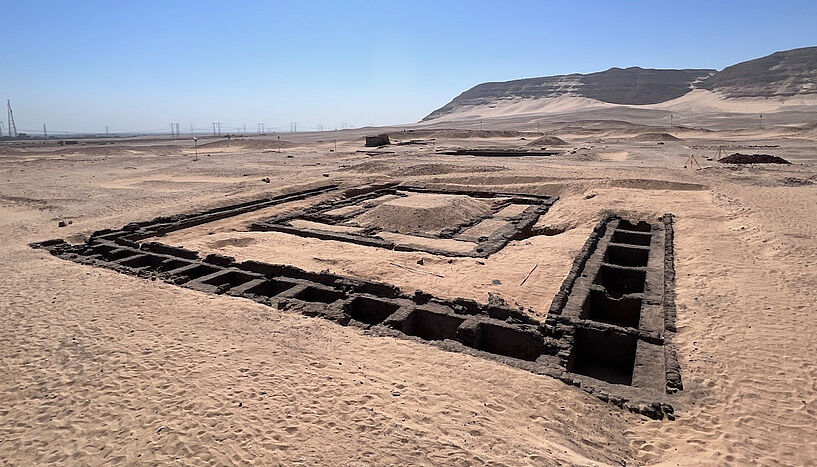
Fig. 1: The tomb complex of Queen Meret-Neith in Abydos during excavation. The Queen's burial chamber lies in the centre of the complex and is surrounded by the secondary tombs of the courtiers and servants C: EC Köhler
New archaeological discoveries at the tomb of Meret-Neith in Abydos
A German-Austrian team led by archaeologist Christiana Köhler from the University of Vienna is investigating the tomb of Queen Meret-Neith in Abydos, Egypt. She was the most powerful woman in the period around 3,000 BC. Recent excavations prove her special historical significance: the researchers found 5,000-year-old wine and other grave goods. This fuels speculation that Meret-Neith was the first pharaoh of ancient Egypt and predecessor of the later Queen Hatshepsut.
The team recently began archaeological excavations in the tomb of Queen Meret-Neith of the 1st Dynasty (c. 3,000 BCE) in Abydos and discovered significant new information about this important historical woman. Queen Meret-Neith was the only woman to have her own monumental tomb in Egypt's first royal cemetery at Abydos. She was probably the most powerful woman of her time and today's researchers speculate that Meret-Neith may have been the first female pharaoh in ancient Egypt and thus the predecessor of the later Queen Hatshepsut from the 18th dynasty. Her true identity remains a mystery. The new excavations bring to light exciting new information about this unique woman and her time.
The archaeological team found evidence of a huge amount of grave goods, including hundreds of large wine jars. Some of them were very well preserved and even still sealed in their original state. They contained the remains of 5,000-year-old wine. In addition, inscriptions testify that Queen Meret-Neith was responsible for central government offices such as the treasury, which supports the idea of her special historical significance.
Meret-Neith's monumental tomb complex in the Abydos desert, which includes the tombs of 41 courtiers and servants in addition to her own burial chamber, was built of unbaked mud bricks, clay and wood. Thanks to careful excavation methods and various new archaeological technologies, the team was able to show that the tombs were built in several construction phases and over a relatively long period of time. This observation, together with other evidence, radically challenges the idea of a ritual human sacrifice as part of the royal burial in the 1st Dynasty, which was often assumed in early research but never really proven.
The team is working in an interdisciplinary and international collaboration between the Egyptian Ministry of Tourism and Antiquities, the German Archaeological Institute in Cairo, the University of Vienna and the Vienna University of Technology in Austria and Lund University in Sweden. The project is funded by the Austrian Science Fund (FWF) and the German Research Foundation (DFG).
Pictures:
Fig. 1: The tomb complex of Queen Meret-Neith in Abydos during excavation. The Queen's burial chamber lies in the centre of the complex and is surrounded by the secondary tombs of the courtiers and servants C: EC Köhler
Fig. 2: 5000-year-old wine jars in the tomb of Queen Meret-Neith in Abydos during the excavation. The jars are in their original context and some of them are still sealed. C: EC Köhler
Fig. 3: Excavations in the tomb complex of Queen Meret-Neith in Abydos C: EC Köhler
Fig. 4: These excellently preserved grape seeds were found in the sealed wine jars in the tomb of Queen Meret-Neith in Abydos C: EC Köhler






